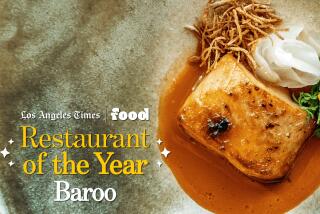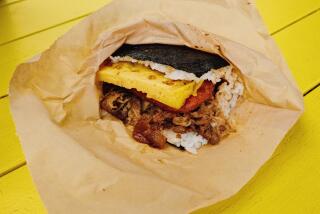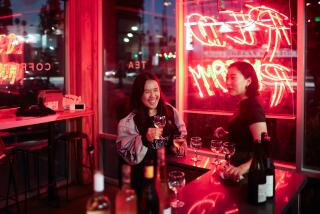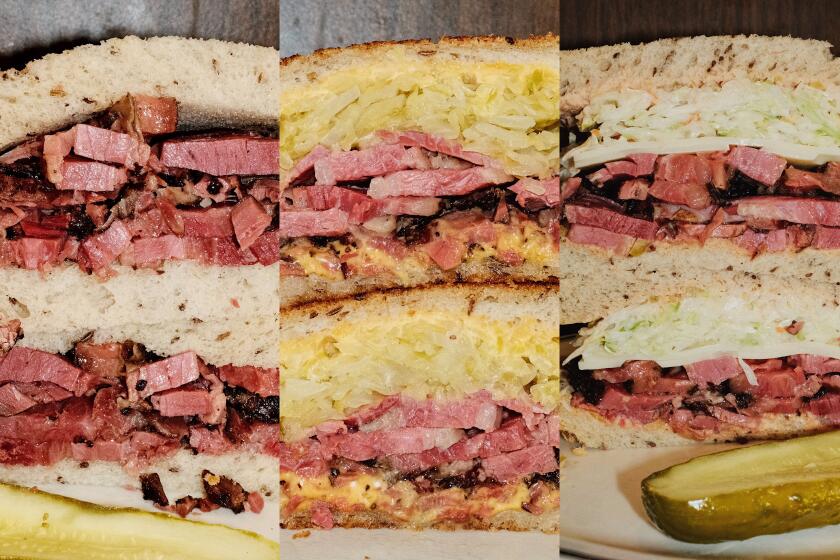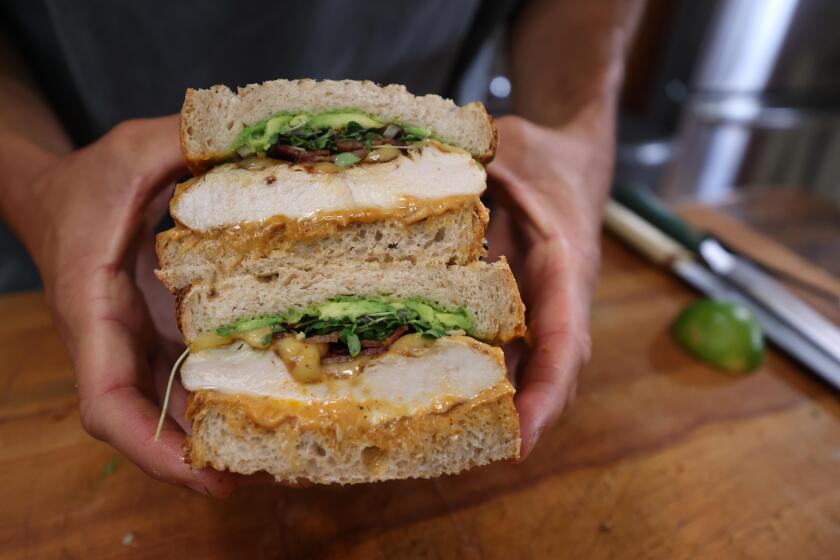At Hangari Bajirak Kalgooksoo in Koreatown, great bowls of handmade noodles
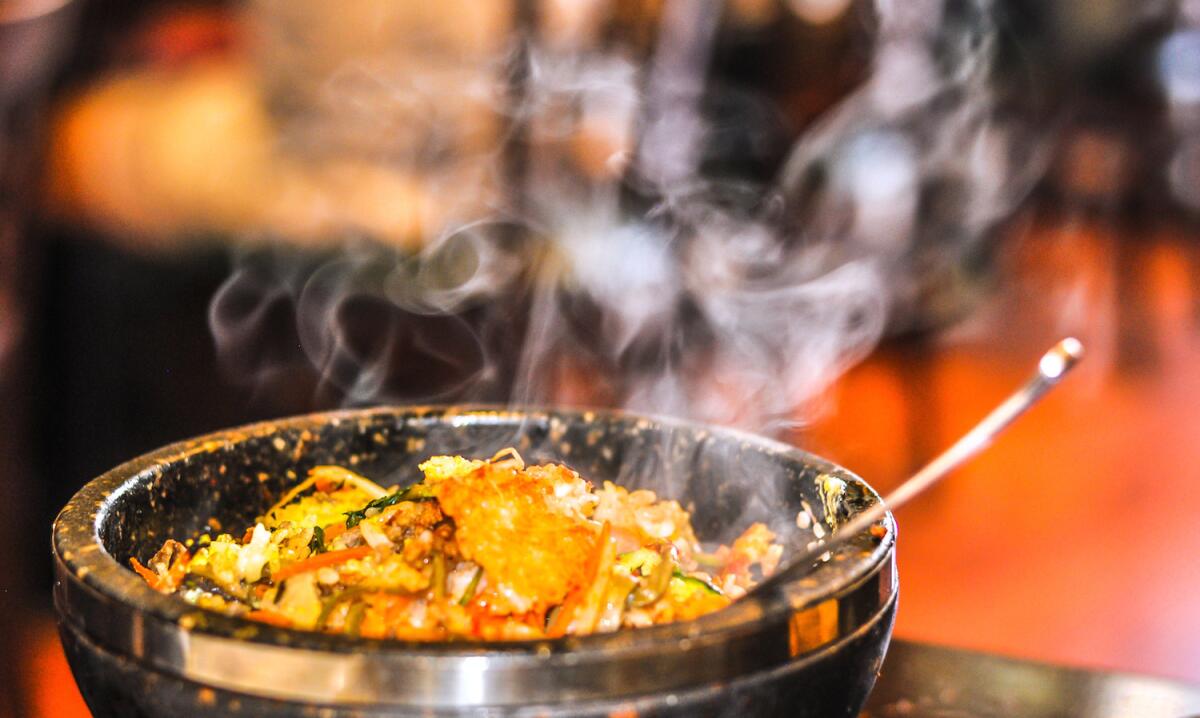
Name of restaurant: Hangari Bajirak Kalgooksoo.
Concept: Hangari is a small noodle shop in a strip mall in Koreatown on the corner of 6th Street and Alexandria. (For further reference, Hangari is across the street from the Hotel Normandie, maybe a hundred yards away from The Boiling Crab, and a short walk from Pot, which is convenient for Roy Choi, who frequents the noodle shop.)
It looks like every other small noodle shop in a strip mall in Koreatown, with paper placemats and menus taped to the walls in lieu of decor. The house specialty is kalgooksoo, or knife-cut noodles, but Hangari would be a destination even if kalgooksoo weren’t on the menu. Everything this restaurant does, it does well.
What dish represents the restaurant, and why: Considering the name of the place, the bajirak kalgooksoo (clam knife-cut noodles) is the most representative dish. These are homemade noodles with an almost doughy thickness that yields a pleasant bite. They come in a huge bowl of warming, clam-tinged broth crowded with clamshells and hunks of zucchini and potato, with a sprinkle of dried seaweed and scallions on top. It’s a homey bowl of noodles, but one that would be tough to make at home.
Runners-up: Though kalgooksoo is Hangari’s signature dish, the best thing on the menu might actually be the milymun, Busan’s cold noodle answer to the more prevalent naengmyun. (Both dishes are composed of long, handmade noodles.) Hangari is the place to get milmyun in L.A., and it is worth driving across town to track down.
The noodles are slick and starchy and springy, with a bounce that comes through in every bite. They’re served cold in a vibrant, slightly spicy broth speckled with radish, cucumber and egg. For some reason, they also come with a side of spicy pork with ddukbossam (sticky little squares of rice paper for wrapping) — gratuitous but appreciated.
The son mandoo, or handmade dumplings, are also excellent, with supple, substantial skins loaded up with a juicy pork and vegetable filling. Some of the best dumplings in Koreatown, really, and they’re just kind of casually available here.
Each entree comes with a complimentary appetizer of barley rice with yeolmu (young radish stems in a light cold kimchi broth), dwaenjang (bean paste), and a couple different kinds of kimchi on the side. This is nutty and delicious, a build-your-own barley bibimbap that serves as an extravagant amuse bouche.
Who’s at the next table: A few Korean ladies out for a weekday lunch. The whole restaurant is full of Koreans passing bowls of noodles back and forth, chatting and slurping away.
Appropriate for: A casual meal of noodles, hot and cold. For best results, share both the kalgooksoo and milmyun.
Problematic: The place gets busy. It’s very popular, especially among Koreans, and you can expect to wait for a table at peak times. Hangari starts filling up even before 11.
Service: Fast and unfussy, mechanical but polite.
What you’re drinking: Iced barley tea from one of those reusable plastic bottles. (Sorry, they don’t serve alcohol.)
Info: Hangari Bajirak Kalgooksoo, 3470 West 6th Street, Koreatown, (213) 388-2326.
More to Read
Eat your way across L.A.
Get our weekly Tasting Notes newsletter for reviews, news and more.
You may occasionally receive promotional content from the Los Angeles Times.
